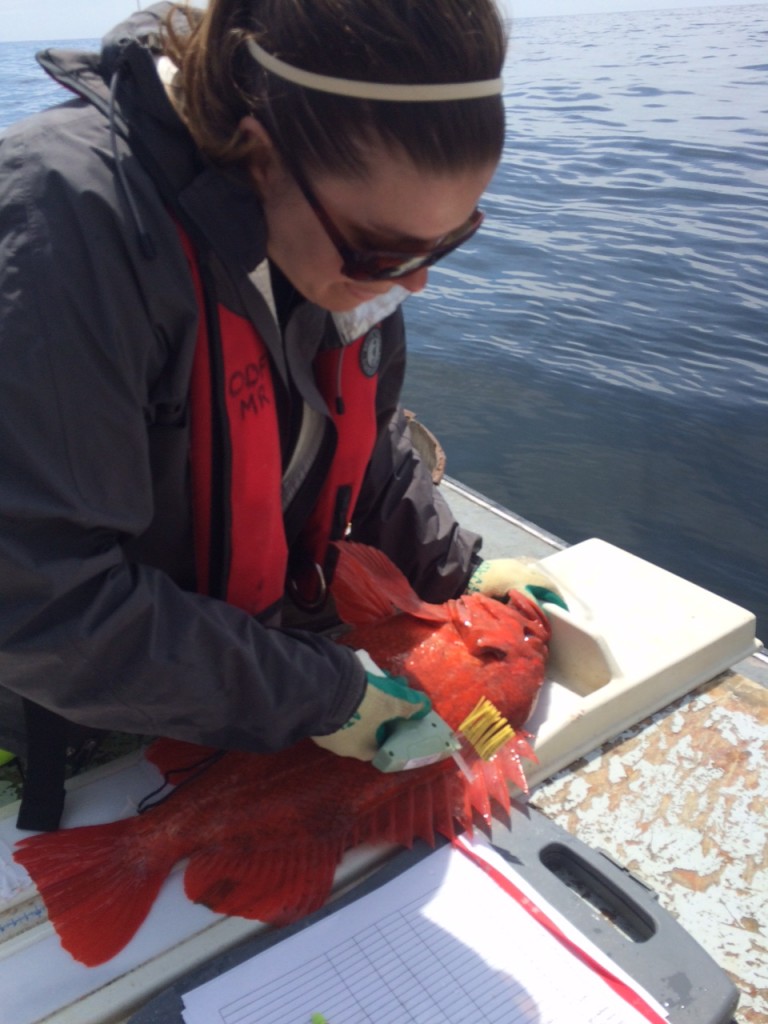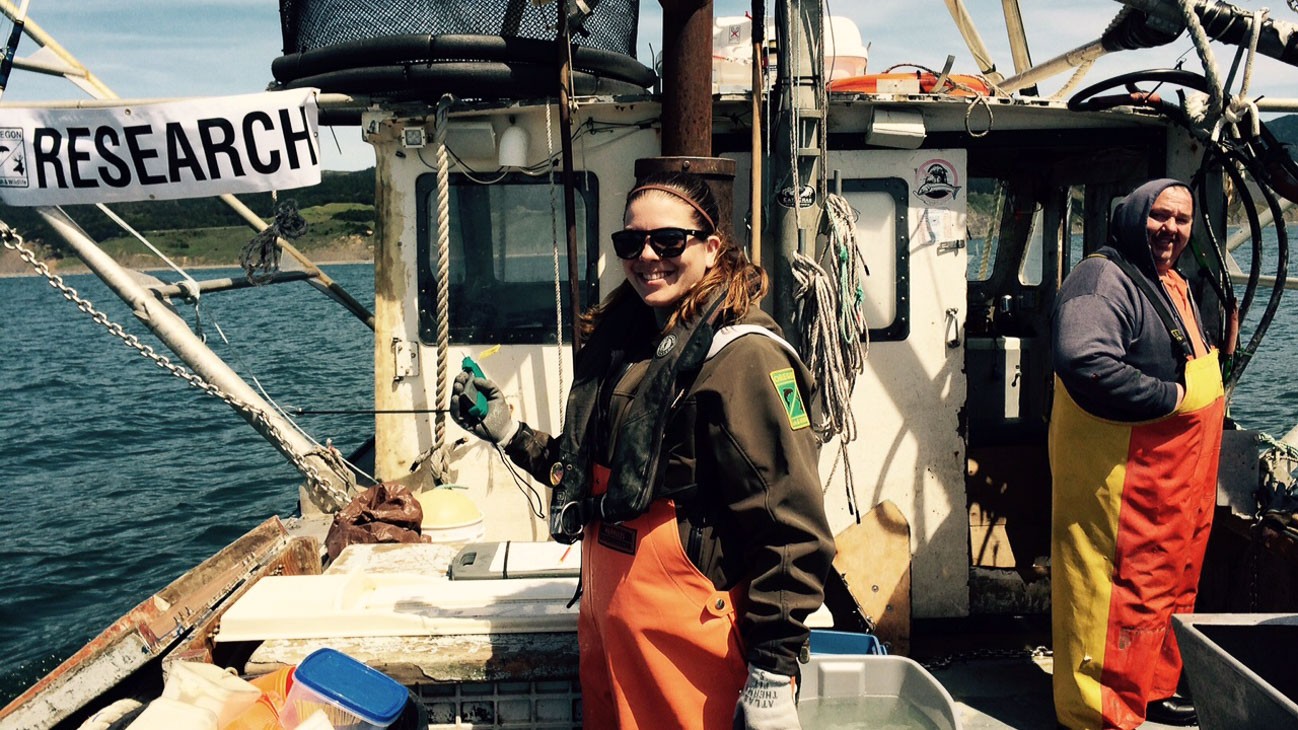 What is a longline? It is a type of commercial fishing gear that is not attached to the boat. It consists of a rope (ours are about 450 ft. long) with a weight at one end so the line stays on the ocean bottom and a float at the other. Off of the rope are short lengths of line with hooks (ours have 100 hooks per line). We baited our hooks with squid and they were on the bottom for about 90 min. We set and retrieved a total of 5 lines per sampling day. Once we pull the lines in on the boat, each fish was identified to species, measured for fork length (the end of its tail), and given a tag in case of future capture outside of the reserve. The picture on the left is Marine Reserves researcher, Jessica Watson, tagging a Vermillion rockfish while it is on the measuring board.
What is a longline? It is a type of commercial fishing gear that is not attached to the boat. It consists of a rope (ours are about 450 ft. long) with a weight at one end so the line stays on the ocean bottom and a float at the other. Off of the rope are short lengths of line with hooks (ours have 100 hooks per line). We baited our hooks with squid and they were on the bottom for about 90 min. We set and retrieved a total of 5 lines per sampling day. Once we pull the lines in on the boat, each fish was identified to species, measured for fork length (the end of its tail), and given a tag in case of future capture outside of the reserve. The picture on the left is Marine Reserves researcher, Jessica Watson, tagging a Vermillion rockfish while it is on the measuring board.
Currently, with our hook-and-line survey our catch is dominated by four species: Black and Blue Rockfish, Lingcod, and Kelp Greenling. In an attempt to increase the catch of solitary, bottom dwelling species of rockfish such as Quillback, Copper, China, Vermilion, and Yelloweye; we initiated a long-line pilot study at Redfish Rocks Marine Reserve. The goals of this study are to compare the diversity of species caught from hook-and-line to long-line methods and to increase our fish size data for several of these other colored rockfish species.
In our first few days of the study we have been successful in sampling a wider variety of the colored species of rockfish. We will complete the pilot study with two more trips, so stay tuned for more updates.
